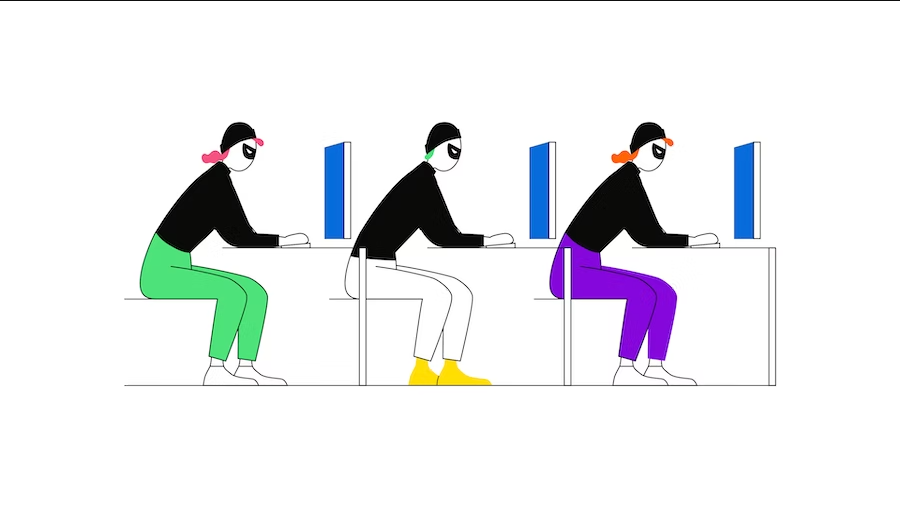Why do shareholders invest in companies?
In order to receive funds from investors for company shares, the company goes public and issues these shares to investors in the form of stocks. A stock is therefore a small part of a company and, in the broadest sense, a way for shareholders to invest money. A shareholder - also called a stockholder - is consequently someone in possession of at least one share of that company.
The funds invested by shareholders are used by the company to support research, development, new product launches, corporate expansion, the repayment of debt, and more.
Shareholders invest in the shares of companies where they assume that the value of this company and the share price will increase due to successful performance. If this is the event, investors usually also receive dividends - these are payments amounting to a small proportion of the company's profits.
What is market capitalisation?
Market capitalisation is one of many business ratios. Companies use ratios to analyse and present its financial development and performance.
Market capitalisation is the total valuation of the company's shares with regard to its current share price and the total number of outstanding stocks. It is calculated by multiplying the market price (quotation) of its stock by the total number of outstanding stocks (the stocks held by all the shareholders of a company at that time).
Therefore, the rise and fall of stock prices and the number of stocks in circulation affect the company's market capitalisation and thus its market value.
By buying back shares or issuing new shares, a company can influence the number of shares in circulation.
Why do companies opt for a stock split?
If a stock is very popular with investors, its price can also rise extremely high. However, this also makes the company's stocks too expensive for many new investors. Now, the company has the option to reduce or increase the number and therefore the liquidity of the stocks in circulation in order to make them more attractive again for new investors. In a stock split, therefore, a company's existing stocks are divided into several new stocks.
Caution: a stock split must not be confused with a new issue of stocks or with partial shares! In a stock split, the market capitalisation does not change, instead only the number of outstanding stocks. This number is increased by a certain multiple, but the total value of the stocks remains the same as the value before the split.
The ratios most commonly used in a split are 2:1 or 3:1, which means that after the stock split a shareholder now respectively owns two or three stocks for each stock they held before the split.
A stock split therefore usually takes place when the share price of a company becomes too high to be bought by average investors. Often, blue chip companies in particular can increase the interest of potential investors in a purchase in this way. A stock split is supposed to have a positive effect on liquidity (availability of a security) and, respectively, on the share price.
What does a stock split mean for investors?
Instead of buying one stock worth $100, many investors prefer to buy 100 stocks worth one dollar each. Also, for tradable transactions on many stock exchanges, the nominal amount (the share of a stock in the company's share capital) is calculated per 100 stocks. So when a company's share price has risen a lot, listed companies often announce a stock split as a way to lower the share price to a more popular trading price.
Since a stock split is often implemented as a result of strong growth of a company or with the prospect of future growth, it is considered a positive signal to investors.
Can a company do a stock split just like that?
As with all important matters, implementing a stock split must be decided during a company's general meeting.
This lowers the price of a single stock, but does not change the value of a shareholder's holdings. Why does a stock split not cause share prices to fall? If stocks of a company are split, the nominal value, the market value and trading volumes are automatically adjusted in almost all analysis programmes, but visually marked in the presentations. Therefore, it is recommended that you as an investor pay attention to indicators such as stock splits that have taken place when researching past developments in order to draw the right conclusions.
How can I invest in stocks?
With Bitpanda Stocks, you can invest in stocks* and ETFs* proportionately and from as little as €1, commission-free and with tight spreads. We now offer over 1,000 assets on our platform. This is made possible by derivative contracts covered by the underlying stocks and ETFs.
*Bitpanda Stocks enables investing in fractional stocks. Fractional stocks in Europe are always enabled via a contract which replicates the underlying stock or ETF (financial instruments pursuant to section 1 item 7 lit. d WAG 2018). Investing in stocks and ETFs carries risks. For more details see the prospectus at bitpanda.com.
 Commodities* Invest in commodities 24/7
Commodities* Invest in commodities 24/7 BITCOIN What to know when you are just starting to invest
BITCOIN What to know when you are just starting to invest ASSET MANAGEMENT Your investment, your assets: Why your money is safe with Bitpanda
ASSET MANAGEMENT Your investment, your assets: Why your money is safe with Bitpanda COUNTDOWNBitcoin Halving Countdown 2024
COUNTDOWNBitcoin Halving Countdown 2024 ACADEMYWhat is the Bitcoin halving?
ACADEMYWhat is the Bitcoin halving?






